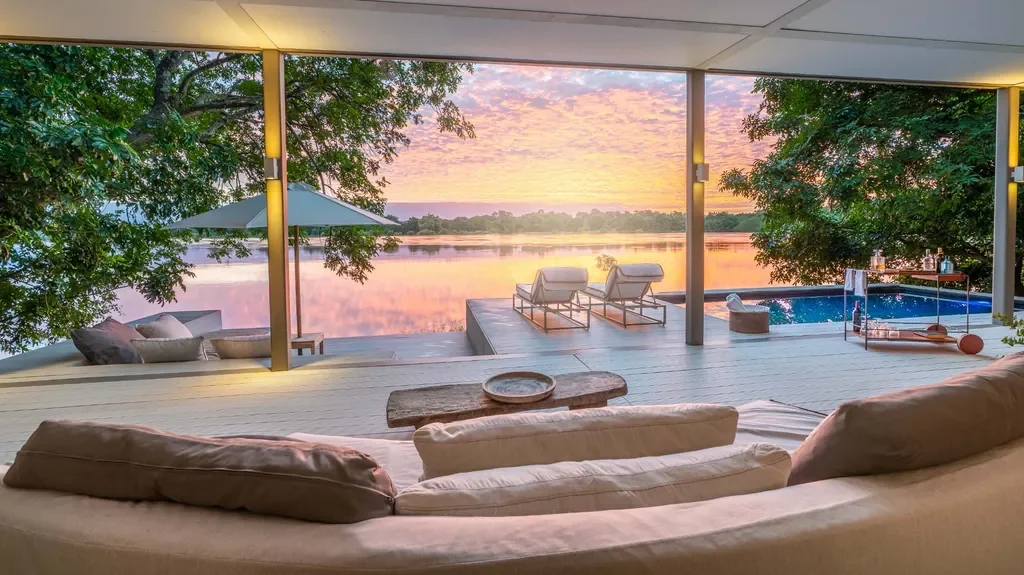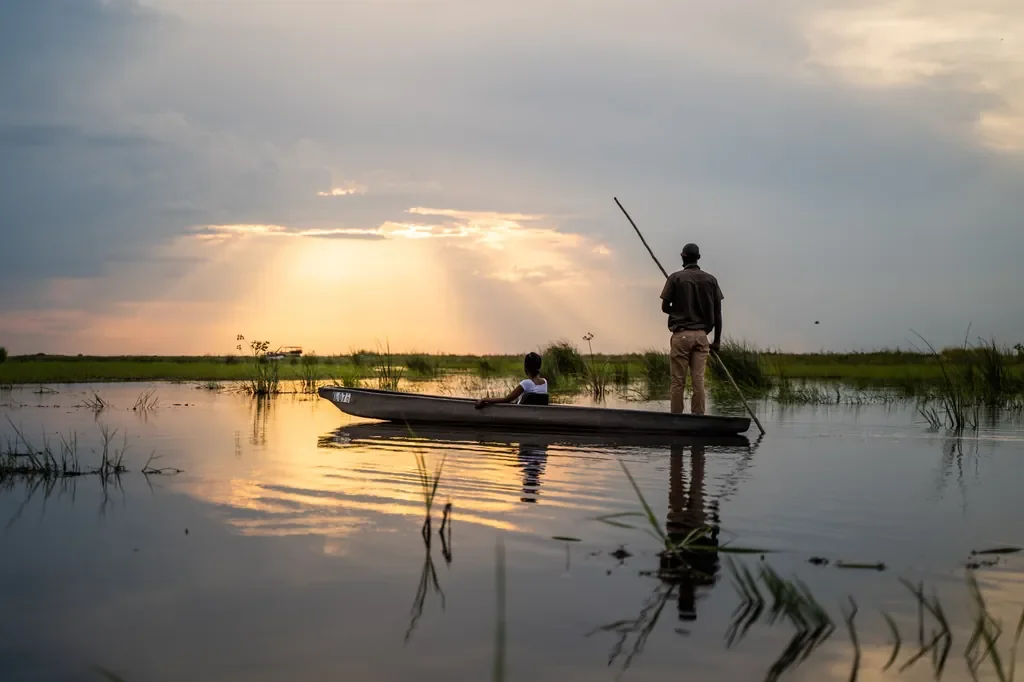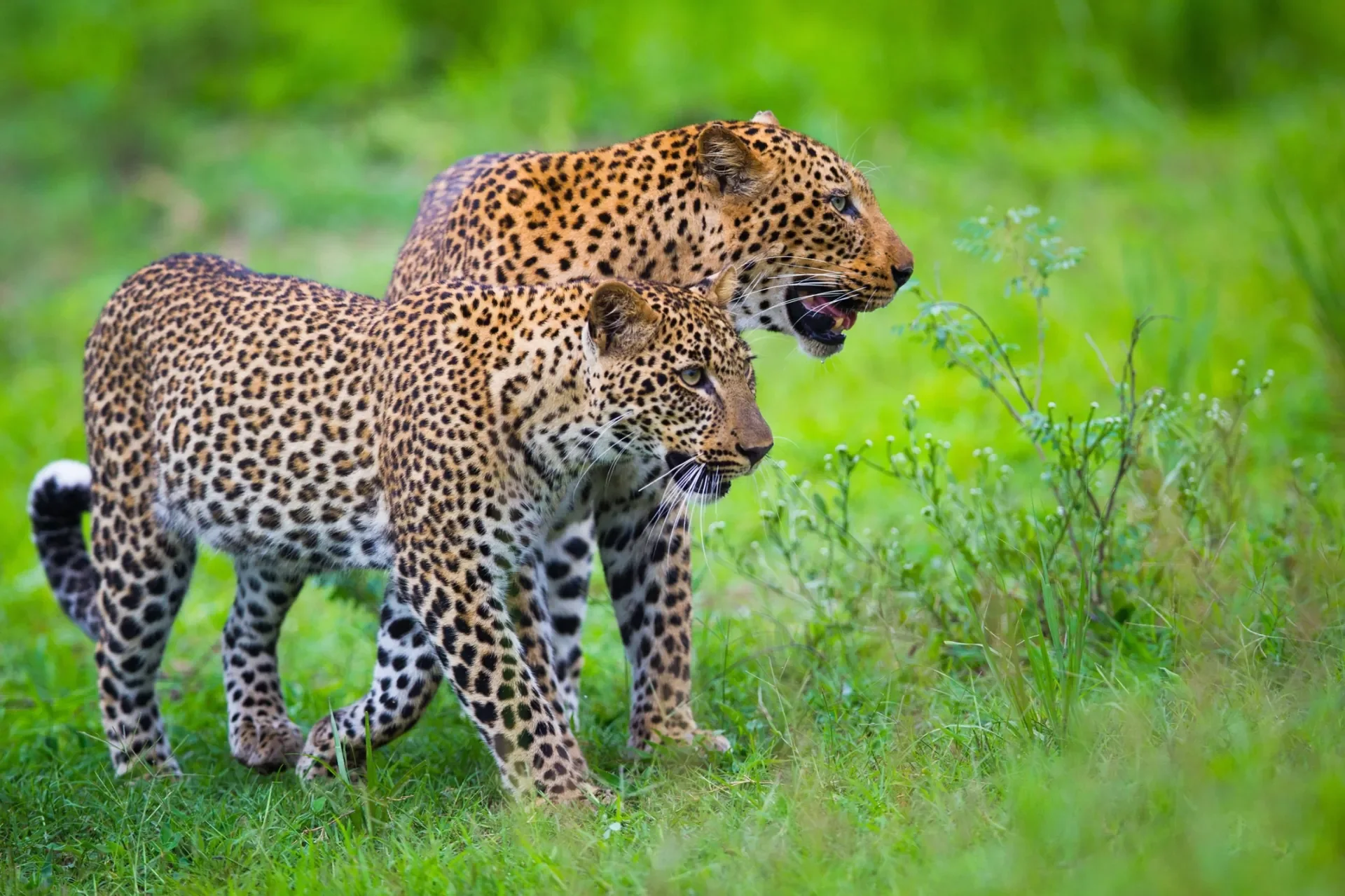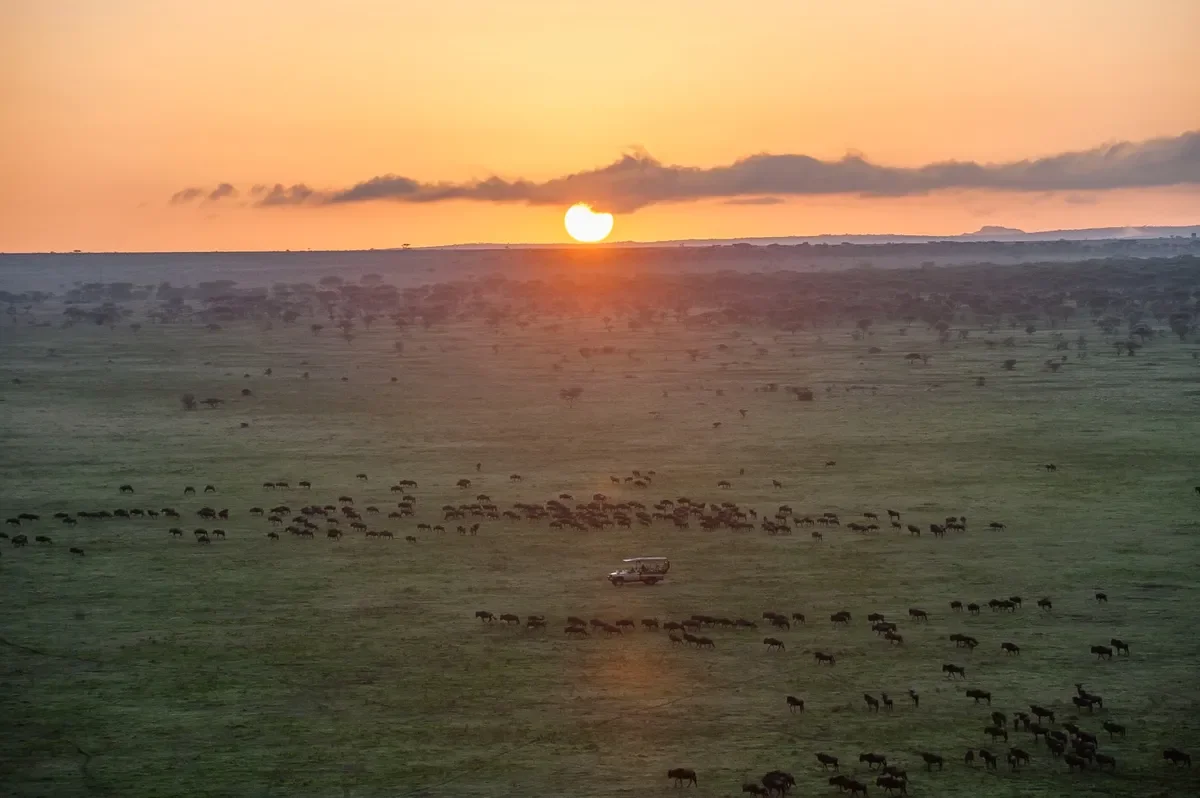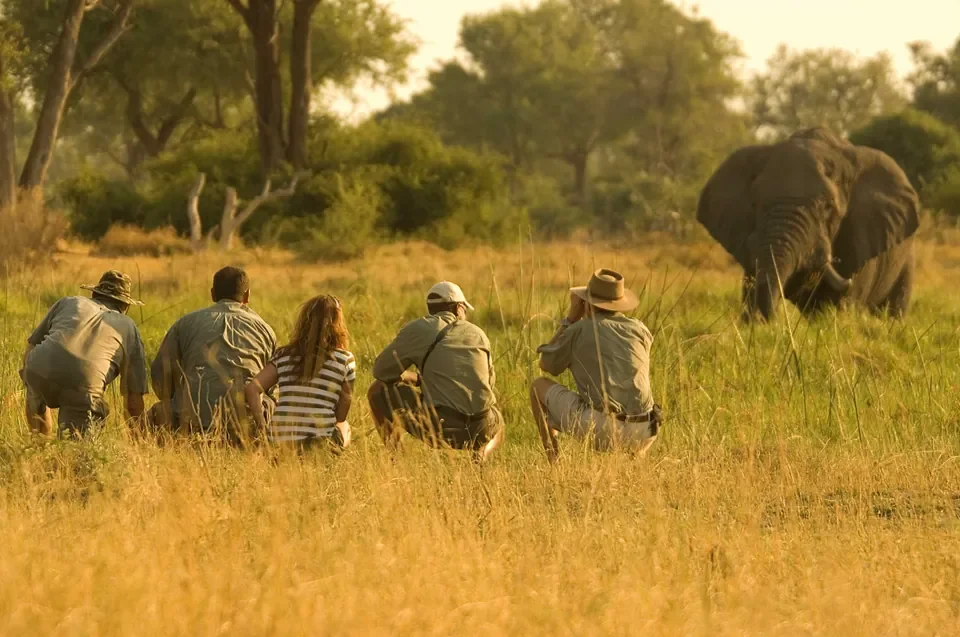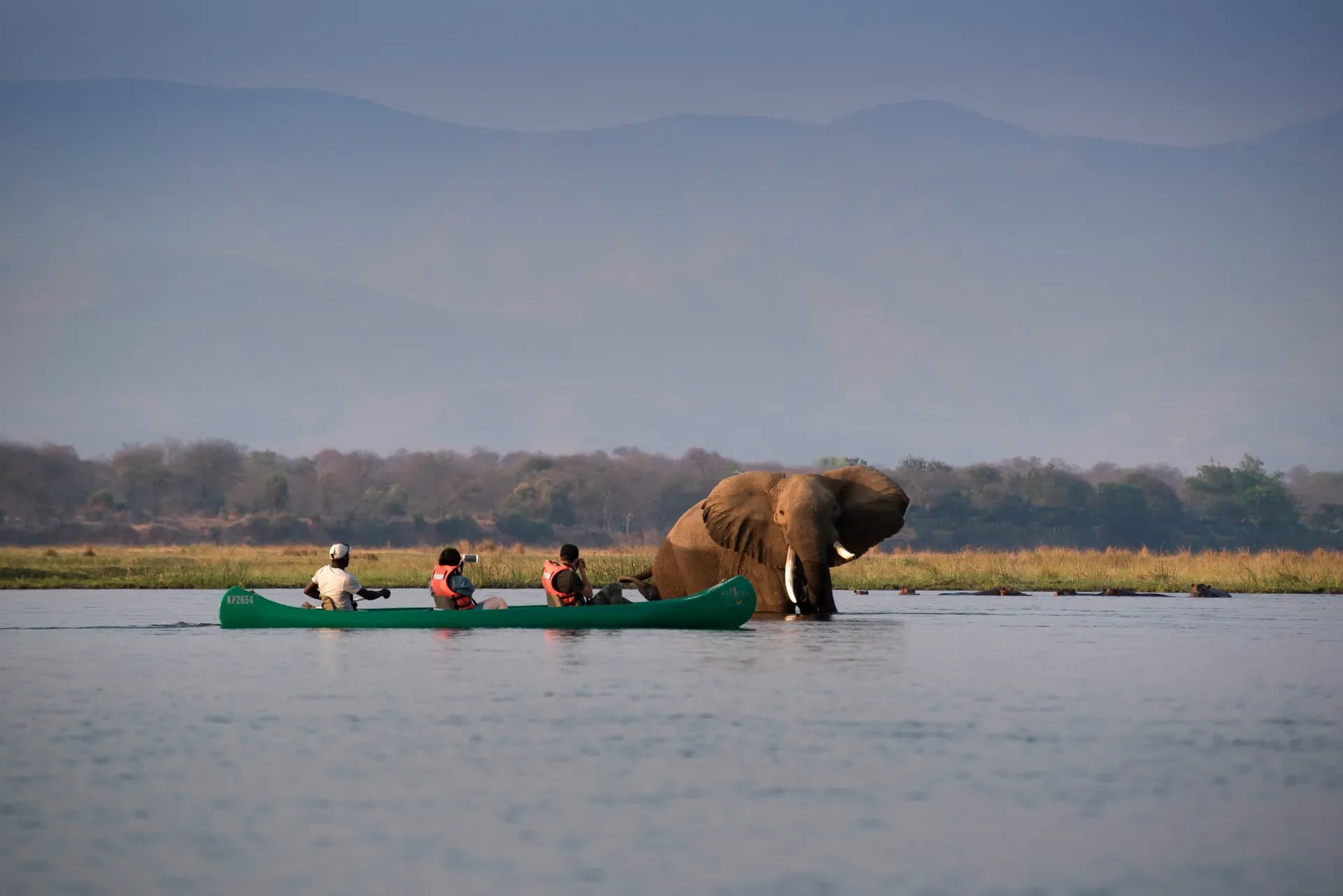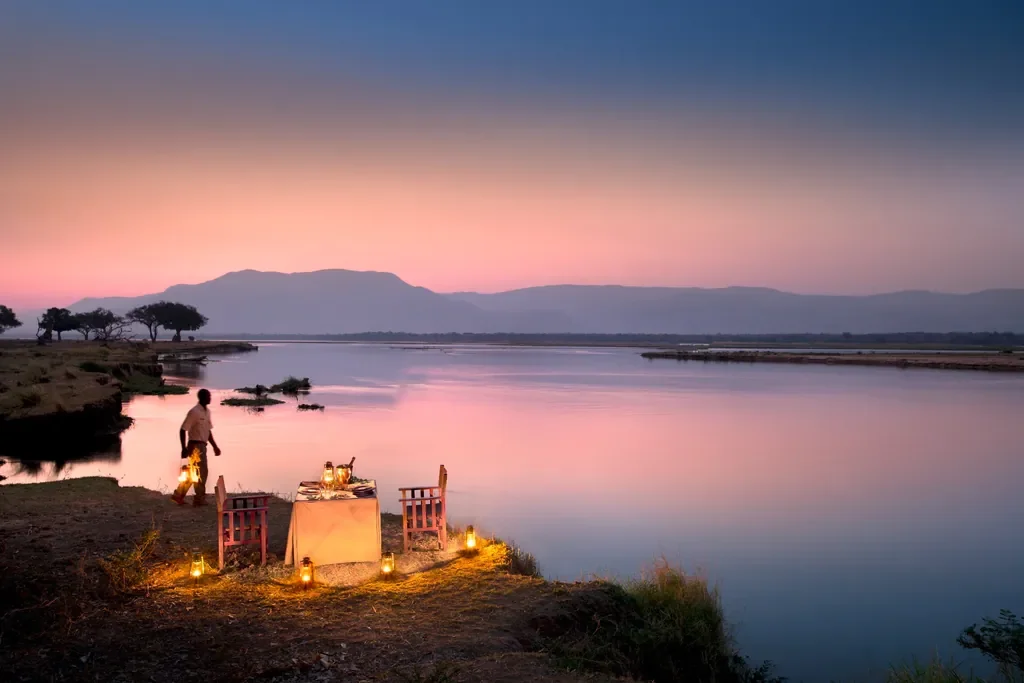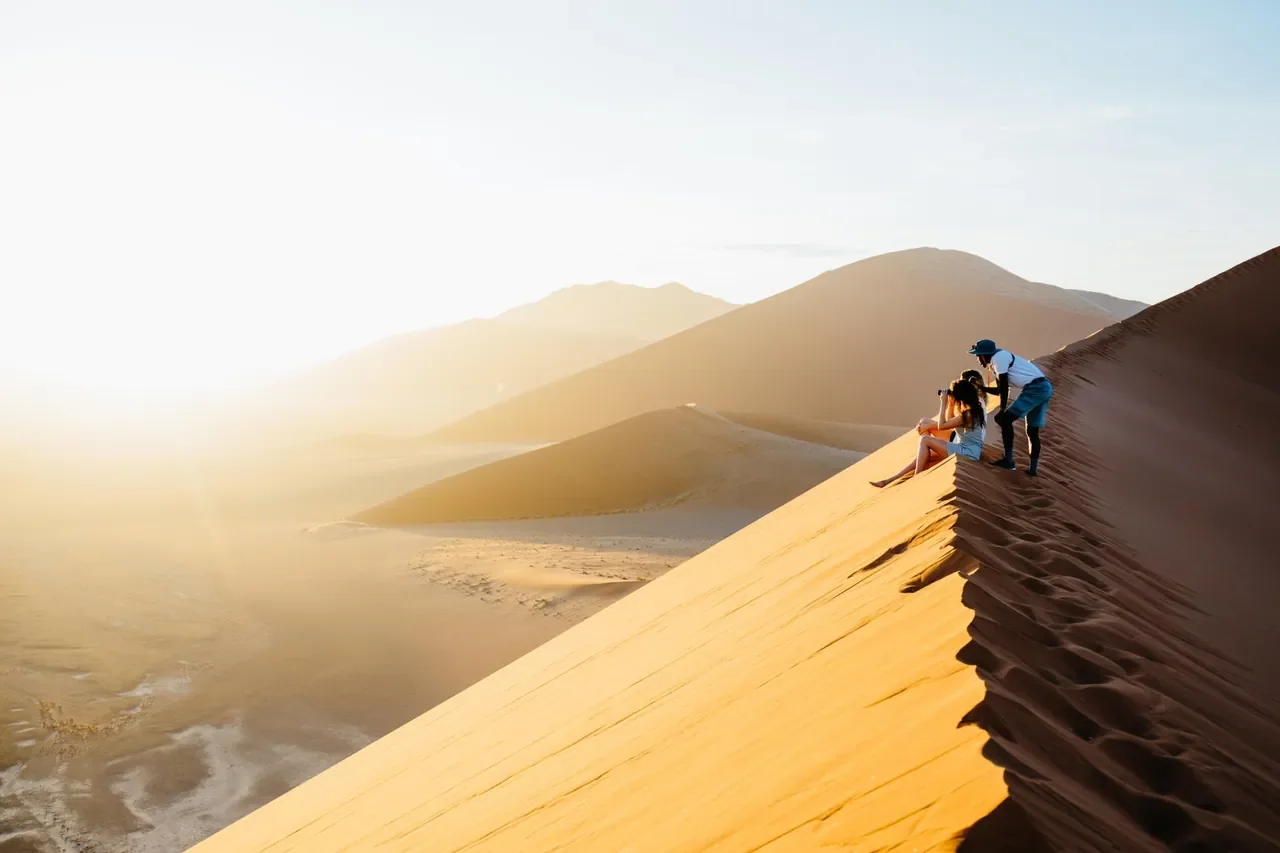When to Travel to Africa
There Is Always a Season
Here is the good news for anyone dreaming of an African journey. There is always somewhere worth visiting. Southern Africa, East Africa, and the Indian Ocean islands span deserts and deltas, highlands and forests, reef-rimmed coasts and inland lakes. That variety creates a year-round calendar of moments. One month you might watch elephants wade through the Okavango. Another, you could stand beneath a misty skyline in Rwanda after meeting a family of mountain gorillas. In July you may find yourself beside the Mara River as wildebeest time their crossing. In January you might walk across Ndutu’s short grass while new calves learn to stand. Different places peak at different times, and that is exactly why there is always a place to go.
At NOMARA we start with your dates and the kind of experiences you want. If your window is fixed by school holidays or a honeymoon, we pivot to the regions that shine then. If you are flexible, we help you choose according to wildlife behavior, light for photography, water levels, and the overall feel you prefer. Clear and cool. Green and dramatic. Quiet and private. All of these are possible.
Wet, dry, green: what these seasons really mean
Across safaris in Africa the words dry season and wet season are used a lot. Dry season usually means sunny days, cool mornings, very little rain, and shorter grasses. Waterholes shrink, permanent rivers hold their level, and wildlife concentrates in predictable places. It becomes easier to see animals and to follow tracks on firm ground.
Wet season simply means the rains arrive. In much of Southern Africa this is roughly November to March. In East Africa there are two patterns that matter. The short rains often come in November. The long rains are more likely from March into May. The rain does not fall all day, every day. Often it arrives in bursts, clears the air, and leaves the landscape bright and fresh.
You will also hear people say green season. This is a traveler’s way of describing the rainy months. The bush turns luminous, many antelope give birth, predators follow the easy pickings, and birdlife explodes with migrants and breeding plumage. For photographers, the skies can be extraordinary. For travelers who enjoy a quieter feel, this period can be a gift.
None of these labels equal good or bad. Dry season is superb for classic big-game visibility. Green season offers life, color, young animals, and fewer vehicles. The right choice is the one that fits your dates and your taste.
East Africa through the year
East Africa sits closer to the equator, so temperatures are fairly stable. The changes you notice are rainfall patterns, grass height, and the movement of the wildebeest and zebra herds that make up the Great Migration.
From January to March, southern Serengeti and Ndutu are the nursery of the plains. Short grass feeds thousands of pregnant cows. Calving arrives in a dramatic wave. Lions, cheetahs, and hyenas work the edges while eagles circle overhead. It is a powerful time to be out early and to settle in with a sighting rather than chase the next one.
As the year turns, the herds begin to fan west and then north. In June and July, the Western Corridor and the Grumeti region can bring river scenes and long lines of moving wildebeest. From July into October, the action often shifts to Kenya’s Masai Mara. This is crossing season for the Mara River. It is also a fine time for big cats in open country. When short rains arrive in November, the herds begin their slow return journey south. Well-placed mobile camps move with them. Permanent lodges offer resident wildlife and a different kind of stability. We design around your dates rather than insist on a single “best” week.
Beyond the Migration route, Kenya and northern Tanzania remain rewarding in many months. Amboseli is famous for elephants moving across pans with Mount Kilimanjaro as a backdrop in cooler, drier months. Tarangire comes into its own from July through October when its river draws animals from miles around. The Ngorongoro Crater is a year-round bowl of life with shifting light and changing grass.
Primate trekking belongs in this conversation too. Rwanda offers gorilla and golden monkey permits throughout the year. Many guests like June to September and December to February when trails are firmer and rain is less frequent, but mist and soft light can be beautiful at other times. Forests always feel alive. The choice is more about how you like to walk and how much time you want to give a trek.
On the coast, Zanzibar changes tone with the seasons. June to October is dry, breezy, and comfortable. December to February is warm and lively, with excellent conditions in certain bays for kitesurfing. During the short or long rains you can still enjoy quiet beaches and spice farm visits, with showers that come and go.
Some camps in southern Tanzania pause during the long rains in April and May, especially where roads become tricky. That is not a drawback, it is simply part of the rhythm of the region. We guide you to places that are open and at their best when you plan to travel.
Southern Africa through the year
Southern Africa shows a stronger contrast between wet and dry. Dry months bring cool mornings, clear sightlines, and a gradual concentration of animals near water. Green months bring heat and storms that turn the bush emerald, fill shallow pans, and set the stage for births and birds.
Botswana is a useful case study. The Okavango Delta receives floodwater from rains that fell months earlier in Angola. This water arrives as the dry season sets in. From May through October you get a rare mix of strong land-based game viewing on islands and floodplains, alongside mokoro and boating through channels and lagoons. Predators patrol the edges, elephants pass in long lines, and nights are crisp. In the green months the bush is full of young antelope, birds call from every direction, and storm light creates dramatic scenes. African wild dogs often den in winter, so some areas of Linyanti and the northern Delta are special then. The experience shifts, but quality remains.
Zambia has its own cadence. South Luangwa is a walking safari paradise in the dry season, from about June to October. Guides read stories in the dust and teach you to notice hyena tracks, owl pellets, and the scent of wild sage. The Lower Zambezi combines game drives with canoeing and boating when levels are right, and time on foot on open islands. In the rains many remote bush camps close because black-cotton soils turn to porridge. That is why the experience is so wild when it is open. The Busanga Plains of Kafue are a seasonal jewel. As waters recede and August arrives, red lechwe splash through morning mist, lions watch from termite mounds, and the window remains golden until around October.
Zimbabwe rewards the patient traveler. Hwange’s pans and pumped waterholes become meeting places through winter and spring. Mana Pools, set along the Zambezi, excels for walking and canoeing in the dry months, then often winds down with the heavy rains. Victoria Falls changes with the season. In late summer and early winter the flow can be thunderous. Later in the year the curtain thins, which actually improves visibility into the gorge. We will time your visit to match how you want to experience the Falls.
Namibia is different again. Focus on Kunene and Damaraland, where desert-adapted elephants and black rhino move along ephemeral rivers and across rocky plains. Along the Skeleton Coast the air is cool and luminous even in summer. After rains, desert flowers and fresh grass add color to the vastness. This is a land of space and texture more than dense game, and it pairs beautifully with a classic big-game area elsewhere.
South Africa lets you combine climates. The Kruger private reserves, including places like Timbavati and the Sabi Sands, are outstanding for big cats in the dry months when grasses are short and nights are cool. In the green months you gain color, young animals, and migratory birds along with fewer vehicles. Cape Town and the Winelands follow a Mediterranean pattern. Summer, from about December to March, is warm and clear. Winter brings showers, fireplaces, and long lunches. Many guests pair Cape Town with a safari further northeast for balance.
For the beach piece, think private Zanzibar islands and Mozambique’s private islands, including parts of the Bazaruto Archipelago. Clear seas and calm conditions are more common from April into December. The first quarter of the year can be wetter in some areas, so we plan accordingly.
What actually changes for you
Three things shift in a way you can feel. First, the behavior and density of wildlife. Dry months funnel animals to water. You might spend an hour watching elephants move in a slow procession to a pan in Hwange or follow lions waiting silently for thirsty antelope in the Lower Zambezi. In green months the world teems with newborns. Predators hunt often. Birding is at its peak. You trade concentration for energy.
Second, the look of the land. Dry months bring golden grass and wide views. Green months bring moody cloudscapes, rich tones, and clear air after afternoon showers. Photographers often prefer one or the other. Many end up loving both for different reasons.
Third, how you spend time. Water levels affect whether boating and mokoro feature in the Delta. Firm ground in Zambia invites longer walks. Ballooning over the Mara and Serengeti is often best with calm, clear mornings. In forests, slightly drier months make gorilla trails easier underfoot. Your days adjust to conditions. The quality does not slip.
How to choose, book, and make the most of your dates
If you plan to travel during school holidays, tell us early. July and August suit the Mara, Botswana, South Luangwa, and parts of Zimbabwe. December into early January works for Cape Town paired with Kruger private reserves, for northern Tanzania, for the Delta and Linyanti, and for beach time on private islands in Mozambique or off Zanzibar. These periods are popular, which means the most loved small camps fill quickly. A lead time of 12 months is sensible for prime rooms and for gorilla permits in Rwanda.
Shoulder periods can be a sweet spot. In East Africa, April to May and November are quieter. In Southern Africa, parts of April, May, and November can deliver excellent experiences at gentler prices. Green season is the value hunter’s dream. You gain drama in the skies, soft light, and long, unhurried sightings with very few vehicles. Some camps close in the most remote areas at the height of the rains, which is one reason these regions feel so special when they reopen. We will steer you to the right places that suit the month you hold.
Think about your comfort as well. Dry seasons are cooler at night and may require a fleece at dawn. Green seasons can be warm and humid. Laundry dries quickly, and an afternoon storm on a hot day can be refreshing. If you are a photographer, picture the kind of light and color you prefer. If you are a walker, tell us whether you like slow time on foot. If you love time on the water, we will angle for higher Delta levels or for Zambezi days that balance canoeing with game drives. If predators are your focus, we will plan around denning seasons and hunting patterns. If you are after African wild dog in particular, we will time Linyanti or other strongholds with care.
For many travelers it is not about one perfect month. It is about a long relationship with the continent. Perhaps your first safari is July in the Mara and Laikipia, with a few nights on the coast. The next year you come back to see the Delta in flood. Then you return for a walking safari in South Luangwa and a seasonal week on the Busanga Plains. Later you make time for gorillas. Each journey shows you a new version of Africa, and none of them repeats the last.
A note on camps and logistics
Seasonality is not only about animals. It is about access. Some wild places close when rains make roads soft and river crossings too high. Examples include certain bush camps in Zambia and parts of Mana Pools in Zimbabwe. In Tanzania, a few southern camps pause during the long rains. Botswana’s high-quality private concessions usually operate year round, but the balance of activities shifts. This is not an obstacle. It is part of the planning we do for you, and it is why local knowledge matters.
If you already have a wish list, we can map it to the right month. Vumbura Plains South is lovely when channels are brimful and you want both land and water activities. Jabali Ridge sings in Ruaha’s dry season with lion country on the doorstep. Toka Leya works almost any month for Zambezi views and access to Victoria Falls. Busanga Bush Camp is a short seasonal window that delivers something you simply cannot find elsewhere. The point is simple. Tell us your dates and the feeling you want, and we will guide you to the right place at the right time.
Questions we hear a lot
When is the best time to go on safari?
There is no single answer. If you want concentrated wildlife, cool mornings, and classic golden scenes, the dry months from May to October in Southern Africa are ideal. If you prefer lush color, fewer vehicles, and newborn animals, consider the green months in the south or the short and long rain periods in East Africa. We fit the plan to your calendar.
When should I book gorilla trekking?
Permits are limited. Six to twelve months ahead is a helpful range, longer for peak months. We handle the details and build the rest of your trip around your trekking dates.
Is the rainy season a bad time?
It is different, not worse. Expect dramatic skies, lively birding, young animals, and quieter sightings. Your guide will manage the odd muddy patch with a smile and a winch.
The simple takeaway
Africa is always in season. Your ideal trip is a match between the month you can travel and the places that sing in that month. Start with your dates, add the wildlife and experiences you care about, and let us shape the route. Our team knows which camps are open, which areas are quiet, when rivers run high, and where those rare species tend to show. Share your window. We will build a journey that fits it beautifully.
Quick FAQs
-
No. We match your dates to regions that shine then. Dry months concentrate game. Green months bring newborns, birding, dramatic skies, and fewer vehicles.
-
Dry means cooler mornings, little rain, and thinner grass for easier viewing. Wet brings showers and lush growth. Green is the traveler-friendly way to describe the rainy period, often great value.
-
Typically July to October in Kenya’s Masai Mara, with year-to-year shifts. We time camp locations to your exact dates.
-
Aim for 6 to 12 months ahead, especially for June to September and December to February.
-
Peak has high demand and classic conditions. Shoulder balances value and sightings. Green offers lush scenes, young animals, great birding, and quieter sightings. Some remote camps pause during heavy rains.
-
Yes. Consider private islands off Zanzibar or in Mozambique for warm water, reef time, and easy travel connections from safari hubs.


